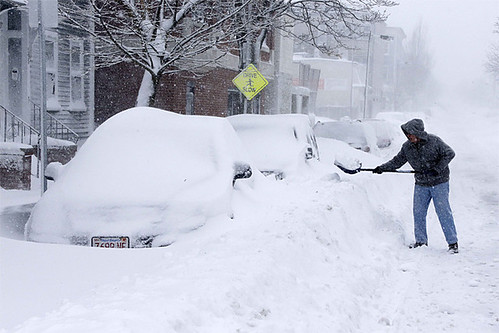Meteorologist
Joe D’Aleo points out in a recent post on his website http://www.icecap.us/ that so far the winter
of 2012-13 from November to February has been ranked the 4th
snowiest. First place is taken by the winter of 1977-78. Second place belongs
to the winter of 2009-10, and third place is held by the winter of 2010-11.

Forecast
March 27-30, 2013
According to
astrometeorological calculations, the Northeast and New England are not out of
the woods yet. The 20th Century’s top long-range weather forecaster,
G.J. McCormack, who used planetary cycles as the basis for his forecasts stated
that atmospheric disturbances are intensified when the Sun forms aspects with
two or more planets of opposite natures. This scenario is about to play out
between March 27-30, 2013 when the Sun conjoins Venus and Uranus. These two
planets are opposite in nature from an astrometeorological standpoint. Venus
increases moisture and warmth while Uranus corresponds to cold, dry air masses
and erratic winds. Being aspected together by the Sun will create disruptive
atmospheric conditions at this time and points toward another winter storm,
even though we’ve officially enter spring, for the Northeast and New England on
those dates. A similar setup takes place over Alaska on these dates.
California Water Shortage Spring 2013 ForecastTiming the Relief for Drought-Stricken U.S. Plains
Testing Astrometeorology Part 2
Hurricane Sandy Fulfills Long-range Weather Prediction!
Testing Astrometeorology Part 1
Fall Weather 2012: Eastern U.S.
Fall Weather 2012: New England
Fall Weather 2012: Central U.S.
Fall Weather 2012: The U.S. West Coast
Mars Conjunct Saturn August 15, 2012
Jupiter-Neptune and Heavy Rain
Long-range effects of the May 20, 2012 Solar Eclipse
Long-range effects of the May 20, 2012 Solar Eclipse Part 2
Hurricane Season 2011 Forecast Results
Hurricane Risk-Management
New Weather Alternative Website
Overview of UK Winter 2012-13
The Winters of 2011-14
Fulfilled Long-range Forecasts for Hurricane Season 2010
Introduction to the Weather Alternative
Climate Change FAQs and Myths (from icecap.us)
Weather extremes such as droughts, floods, hurricane, tornadoes, and heat waves have become more common.
Scientists have studied this issue and come to the opposite conclusion: extreme events are becoming LESS common. Atlantic hurricanes were much more numerous from 1950 to 1975 than from 1975 to present. Hailstorms in the US are 35% less common than they were fifty years ago. Extreme rainfall in the US at the end of the 20th century is comparable to what it was at the beginning of the 20th century. Roger Pielke, Jr, in the journal Climatic Change (1999) said “it is essentially impossible to attribute any particular weather event to global warming.” For flooding, Pielke did list a number of important non-climatic factors that have the potential to influence flooding in the future, including deteriorating dams and levees, changes in land use, building in flood-prone areas, governmental policies, as well as other societal influences. Pielke, R.A., JR. 1999. Nine fallacies of floods. Climatic Change 42: 413-438.
No comments:
Post a Comment